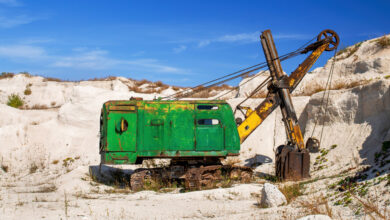Exploring the Remote Corners of Nepal’s Himalaya:

Into the Wild Mountains of Nepal
Nepal has many corners that are wild, high, and deep. Where mountains rise like walls, clouds sleep on ridges, and rivers roar like the wild. In that quiet air, people find peace. Not city noise, not road sound, only wind and the bell of a yak. These corners are not easy to reach. They are hidden, far, and cold. But they are full of stories, full of smiles, and full of dreams. The Himalaya is not just a mountain; it is the heart of Nepal. From east to west, trails run like old veins.
The Spirit of Hidden Trails
Every step in the highlands tells something. Villagers wave from stone houses. Old women spin wool. Children run behind, shouting namaste. The trail is rough, but the feeling is soft. You walk for days, you sleep in small tea houses, you eat dal bhat, and you see stars that look near enough to touch. Life is slow but deep. That’s why trekkers love the remote side. Far from the crowd, far from luxury, but near to the soul.
Makalu Base Camp Trek – The Wild East Beauty
The Makalu base camp trek is not an easy one. It’s long, remote, and raw. Makalu, the fifth highest mountain in the world, stands quiet but powerful. The trek starts from Tumlingtar, a small place with an airstrip and warm people. You follow the Arun River, cross the forest, climb the ridge, and go up to 5000 meters. The trail passes through Makalu Barun National Park, where rhododendrons bloom and waterfalls sing.
You walk through a place where there are hardly any shops. No Wi-Fi, no fancy lodge. Only mountains and sky. You feel freedom and also test your body. The Makalu area is less crowded than Everest but more wild. You see snow peaks like Chamlang, Baruntse, and of course Makalu itself. The base camp, cold and quiet, gives views that make the heart stop for a moment. Big ice face, shining like a silver wall.
Meeting the Locals Along the Makalu Trail
People here are mostly Sherpa, Rai, and Shingsawa. They are simple, kind, and strong. They live with the mountain all their lives. You drink butter tea in their home, and they smile even when life is hard. They tell the story of gods, yaks, and snow. The culture is still alive, not touched by big tourism. Many trekkers say the Makalu Base Camp Trek feels like going back in time. You see how mountain life used to be before everything was modern.
Nature of Makalu—A Living Museum
This region is full of wild things. Red pandas hide in trees, snow leopards walk on snow ridges, and birds sing high tones in the morning. Every day changes—rain, sun, snow, and fog, all in one. You walk in a jungle for one hour and then in Iceland next. The mix of nature blows my mind. That’s why many say the Makalu area is a living museum. You don’t just trek, you learn.
Tsum Valley Trek—Thetrek; Secret Valley of Peace
Then comes the Tsum valley trek, a different world again. North of Manaslu, close to the Tibet border. People call it the hidden valley of happiness. It was closed to outsiders until some years ago. That makes it more pure, more untouched. When you walk there, you feel you enter another time.
The trail starts from Soti Khola or Arughat, follows the Manaslu trail for days, then turns north into Tsum. The valley opened slowly, like a secret door. Big cliffs rise on both sides, and the river cuts a deep gorge. The air smells of pine and incense. You see prayer flags everywhere. Monks chant in old monasteries. Women wear colorful aprons and carry baskets of corn.
Life and Culture in Tsum Valley
People in Tsum Valley follow Tibetan Buddhism deeply. They believe in karma, in compassion, and in silence. You see many walls, chortens, and old gompas like Mu Gompa and Rachen Nunnery. The monks live simply, their faces calm like still water. Every smile there comes from the heart. Trekkers often say they never see such peace anywhere.
Children shout “Tashi Delek” and run beside you. Old men walk slowly with prayer wheels. Everything here feels slow but beautiful. No rush, no phone, only life. You feel you are part of something very old, something sacred.
The Scenery and Feel of the Trail
Tsum Valley is full of wonder. You cross a suspension bridge, pass a stone village, and walk under giant cliffs. Morning light falls on the snow-peaked Ganesh Himal, and you stand just watching. The silence is so big you can hear your heart. At night, stars light up the sky like a thousand lamps. Many say Tsum Valley is not just a trek; it’s a healing journey.
Nar Phu Valley Trek—The Wild North of Annapurna
Narphu valley trek is again another side of the Himalaya. Hidden behind Annapurna, near Manang, it mixes Tibetan culture and high mountain views. Nar and Phu are two ancient villages, like twin jewels in a desert mountain. The valley opened to tourists only in 2003, so it is still pure, raw, and hard.
The trek starts from Koto near Chame. You enter a narrow canyon, cross a wooden bridge, and climb stone stairs, and suddenly you are in a land that looks like Tibet. Houses are made of flat stone, walls are painted white, and people wear traditional dress. You hear chanting from the gompa, and the wind carries the sound of a bell.
The Harsh but Beautiful Landscape
The Nar Phu region is dry and high. It’s not green like Langtang or Everest, but wild and empty. The cliffs rise like a brown wall, and the river cuts a deep gorge. It feels like moon land. But it’s beautiful in a strange way. Blue sky, white snow, brown rock—simple color, but strong power. You cross Kang La Pass (5306 m) and see Annapurna II and Gangapurna like giants.
The cold bites your face, but you smile. You know you’re walking in a place few people go. Every step here tests your will. But when you reach Nar or Phu village, you forget all about being tired. Locals welcome with butter tea and warmth.
People and Culture in Nar Phu
Nar Phu people are Tibetan by heart. They follow Buddhism, they keep yaks, and they weave wool. Their festival is full of mask dance and prayer. They live a hard life, but it is full of spirit. They believe the mountain is God, and every rock has a story. You walk around, and you feel it true. The place has old energy.
Many trekkers say the Nar Phu Valley Trek is one of the most authentic Himalayan experiences. No big lodge, not many tourists, only real life. You see how ancient trade routes look and how people survive in high wind and cold.
Walking the Less Walked Paths
Makalu, Tsum, and Nar Phu—all are remote, all are different, and all are alive. Each show is another face of the Himalaya. Not like the busy Everest or Annapurna circuit. These trails are quiet. You walk for hours without meeting anyone. Sometimes you wonder if you are lost, but then you see smoke from the house, and you smile. These places make you humble.
You learn patience. You learn to live simply. You learn how mountains teach you silence. The journey is not about reaching base camp or passing. It’s about seeing yourself in the wild mirror of the Himalaya.
Challenges of Trekking in Remote Himalaya
These treks are not easy. You need good health, strong legs, and a brave heart. There are no luxury lodges, no easy food, and sometimes no hot showers. You carry a load, you face snow, and you face rain. But that makes it real. Trekking here is not for comfort; it’s for connection. You feel alive because everything is raw.
A permit is also needed—the Makalu area needs the Makalu Barun National Park permit, and Tsum and Nar Phu need a special restricted area permit. These regions are close to Tibet, so you go with a guide. But guides help you understand, not just show the way.
The Magic of Being Alone in Mountains
There’s a moment in the trek when you stop. You see a far mountain, maybe Makalu, maybe Ganesh, maybe Annapurna. Wind blows, clouds drift, and you feel small but full. In that silence, you understand why people come again and again to the Himalayas. It’s not just adventure—it’s meditation.
Night in the mountains is different too. You sit near the fire, drink tea, and talk with a local or porter. Laughter mixes with the wind sound. Sometimes no talk, just peace. You see stars bright like a dream.
Why These Treks Still Matter
In a world where everything is fast, remote treks still keep a slow rhythm. They remind us what real travel means—walking, seeing, and feeling. No rush, no show. Just steps, breath, and beauty.
Makalu shows the power of nature. Tsum shows peace of spirit. Nar Phu shows the strength of people. Together they make a picture of the real Himalaya—hard, humble, holy.
Preparation and Respect
You need good gear, warm clothes, and an open heart. These trails are no joke, the weather can change fast. Always trek slowly, respect locals, and don’t litter. A mountain is not a place to prove; it is a place to learn. Listen to the guide, smile at the villager, and leave nothing but footprints.
Ending the Journey
When you come back from these treks, you are not the same. You carry something inside—quietness, gratitude, maybe wisdom. You remember faces, mountains, the smell of juniper, and the sound of the river. That memory stays long.
Exploring remote corners of Nepal’s Himalaya is not just a walking trip. It’s a journey into the wild heart of earth. It tells you what real life means when there is no internet, no car, and no noise. Just you, a trail, and an endless sky.
Final Thought
Makalu Base Camp Trek, Tsum Valley Trek, and Nar Phu Valley Trek—they are all remote, all rough, and all beautiful. But each gives a gift—Makalu gives strength, Tsum gives peace, and Nar Phu gives mystery. And together they tell the story of the pure Himalaya, far from the crowd, close to heaven.
If you want real adventure, if you want to meet the mountain with an open soul, then go there. You do not just explore a place—you explore yourself.
Booking Process by The Himalayan Odyssey:
To book any of these trek tours through The Himalayan Odyssey Treks Pvt. Ltd. begin by contacting them via email at info@thehimalayanodyssey.com or phone or WhatsApp at +977-9842746298 to discuss your preferred dates, group size, and specific needs. Prior to the trek, you will receive a comprehensive pre-trek briefing with essential information on packing, fitness preparation, and altitude acclimatization. The agency will finalize all logistical arrangements, including transportation, accommodation, and permits, to ensure everything is in place for your trek. Upon arrival in Nepal, the team will ensure that all aspects of the trek are organized, providing you with a smooth and unforgettable experience on these treks.



